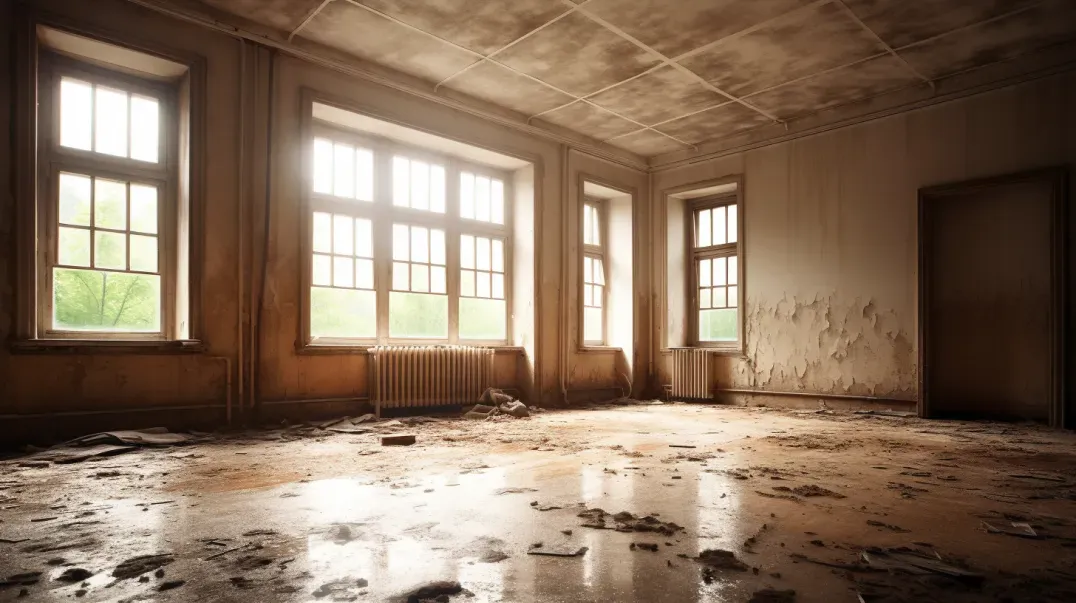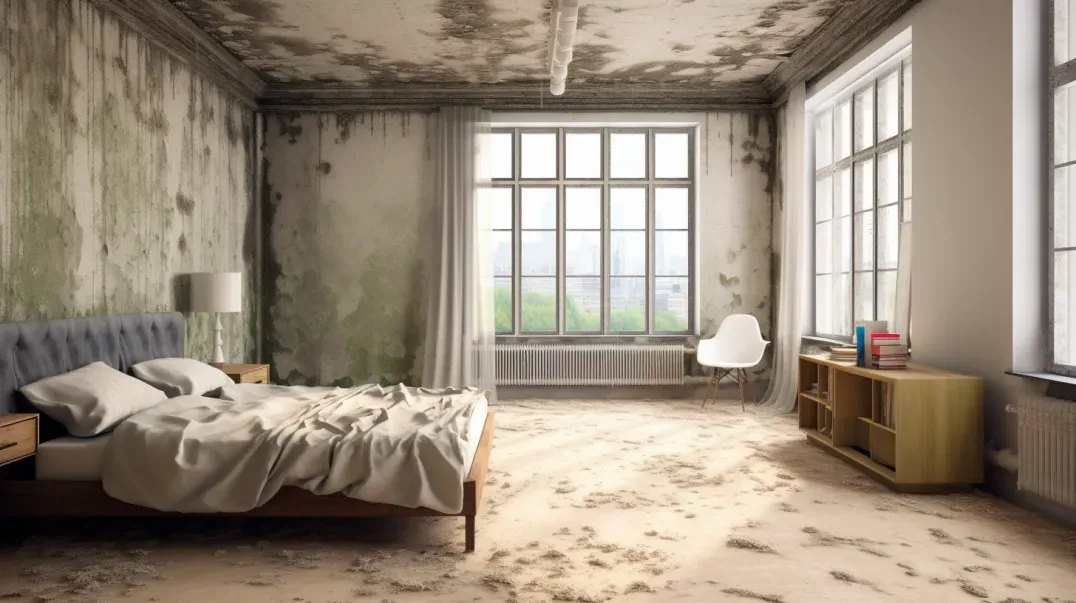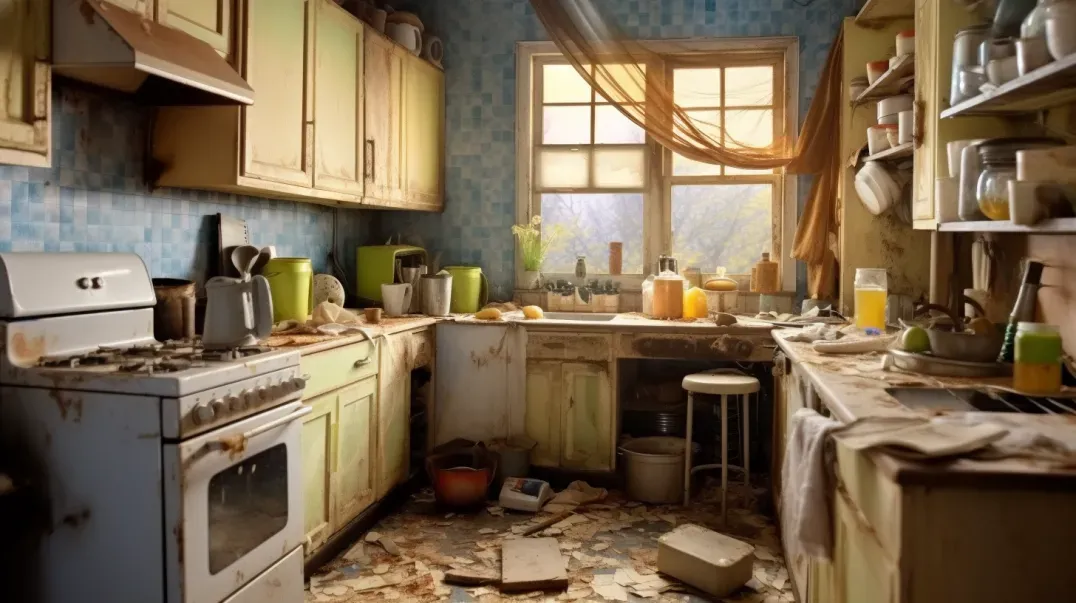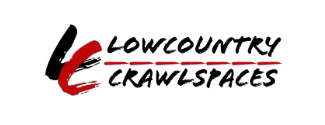Safe Cleaning Products for Mold Prevention
In today's world, where health and environmental consciousness are paramount, the choices we make in our daily cleaning routines carry significant weight. Mold prevention is a critical aspect of maintaining a healthy living environment, but not all cleaning strategies are created equal. The use of safe cleaning products for mold prevention is not just a matter of efficacy but also one of health safety and environmental responsibility.
This blog delves into the crucial importance of selecting safe cleaning products for combating mold, a common yet potentially harmful invader in our homes. Mold can pose serious health risks, particularly to those with allergies, asthma, and other respiratory conditions. Moreover, the environmental impact of conventional cleaning products raises concerns about sustainability and ecological balance.
Through a comprehensive overview, we aim to enlighten our readers about the dual benefits of using eco-friendly and health-conscious cleaning solutions for mold prevention. By prioritizing products that are not only effective against mold but also safe for our health and the planet, we can make informed decisions that contribute to a cleaner, safer, and more sustainable world.
Join us as we explore the importance of this approach, offering insights into how making mindful choices in our cleaning practices can lead to a healthier home and a happier planet.
Understanding Mold and Its Growth Factors
Mold is a ubiquitous part of our environment, playing a crucial role in nature's decomposition process. However, when it finds its way into our homes, it can become a significant health hazard and a nuisance. Understanding mold and the conditions that favor its growth is the first step towards effective prevention and ensuring a healthy living space.
What is Mold and How Does it Grow?
Mold refers to various types of fungi that grow in filaments and reproduce by forming spores that can travel through the air. These microscopic spores are present almost everywhere, both indoors and outdoors, and can enter your home through doors, windows, vents, and even hitch a ride on clothing or pets.
In homes, mold commonly appears in damp, warm, and humid environments and can grow on a multitude of surfaces, from paper and wood to carpet and food. Some common types of mold found in homes include Cladosporium, Penicillium, Aspergillus, and Stachybotrys chartarum (often referred to as black mold, which can produce toxins).
Conditions that Promote Mold Growth
Mold growth is not random; it requires specific conditions to flourish. Understanding these conditions can help in preventing mold proliferation in your home. The primary factors include:
- Humidity: High humidity levels provide the perfect environment for mold spores to settle and grow. Bathrooms, kitchens, and basements are common areas where humidity can accumulate.
- Temperature: Mold thrives in warm temperatures, particularly those between 77°F and 86°F (25°C and 30°C), which are common in many homes.
- Organic Material: Mold needs an organic food source to grow. This can include wood, paper, carpet, food, and even soil from indoor plants.
- Moisture: Leaks, flooding, and condensation create moist environments that mold spores thrive in. Ensuring your home is well-ventilated and dry can significantly reduce mold growth.
By controlling these factors, particularly humidity and moisture, you can create an environment that is less conducive to mold growth, protecting your home and health.
The Role of Cleaning in Mold Prevention
Maintaining a clean and dry environment is paramount in the fight against mold. Regular cleaning not only keeps your living space aesthetically pleasing but also plays a critical role in preventing mold growth by removing potential food sources and reducing moisture. Understanding the role of cleaning in mold prevention can help you create a healthier home environment.
Regular Cleaning to Prevent Mold
Mold spores are omnipresent, but they require specific conditions to grow. Regular cleaning disrupts these conditions, making it harder for mold to establish itself. Here’s how regular cleaning aids in mold prevention:
- Removes Dust and Organic Matter: Dust and organic materials, such as skin flakes and food particles, can serve as food sources for mold. Regular dusting and vacuuming can significantly reduce these materials.
- Reduces Humidity: Cleaning activities like drying wet areas, fixing leaks, and using dehumidifiers help maintain lower humidity levels indoors, making it less hospitable for mold.
- Disrupts Mold Growth: Cleaning with mold-killing products in areas prone to mold can prevent it from taking hold or spreading.
Adopting a regular cleaning schedule that includes these practices can significantly reduce the risk of mold growth in your home.
Target Areas for Mold Prevention
While it’s important to maintain a clean home overall, certain areas are more prone to mold growth and require special attention:
- Bathrooms: Being high-humidity areas, bathrooms are particularly susceptible to mold. Regular cleaning of tiles, shower curtains, and any surfaces that frequently get wet is essential.
- Kitchens: Food particles, spills, and humidity from cooking can promote mold growth. Pay special attention to appliances, countertops, and under the sink.
- Basements and Attics: These areas can become damp and are often poorly ventilated, making them ideal environments for mold. Regular inspections and cleaning are crucial.
- Windows and Doorways: Condensation can accumulate on windows and near doorways, providing moisture for mold. Wiping down these areas can prevent mold growth.
Focusing your cleaning efforts on these areas can help prevent mold from becoming a problem in your home. It’s not just about cleaning more, but cleaning smarter to target the conditions mold needs to grow.
Choosing Safe Cleaning Products
In our quest to maintain a mold-free home, the choice of cleaning products plays a pivotal role. However, not all products are created equal. The safety, effectiveness, and environmental impact of mold cleaning products vary significantly. Understanding how to choose and use these products responsibly can protect your health and the planet while ensuring your home remains mold-free.
Criteria for Safe Mold Cleaning Products
When selecting a mold cleaning product, it’s crucial to balance effectiveness with safety and environmental responsibility. Here are the key factors to consider:
- Toxicity: Opt for products with lower toxicity levels to minimize health risks to you and your family. Look for products labeled as "non-toxic" or "natural," but be aware of greenwashing and verify claims by researching ingredients.
- Effectiveness: The product should be effective against mold. Look for EPA-registered fungicides and products specifically designed to combat mold. However, effectiveness should not come at the cost of safety.
- Environmental Impact: Choose products with minimal environmental impact. Biodegradable, eco-friendly products that are free from harsh chemicals like chlorine bleach are preferable. Consider the packaging as well, opting for recyclable or reduced-plastic options.
Balancing these criteria can help you choose a cleaning product that is safe for your family and the environment while being tough on mold.
Reading and Understanding Product Labels
Navigating the array of cleaning products can be daunting. Understanding product labels is key to choosing safely and effectively. Here are some tips:
- Active Ingredients: Look for the active ingredients and their concentration. This information can help you assess the product's effectiveness and potential toxicity.
- Safety Warnings: Pay close attention to safety warnings, including any recommended protective gear (gloves, masks) and ventilation requirements.
- Certifications: Certifications from reputable organizations can indicate a product's safety and environmental impact. Look for seals from the EPA’s Safer Choice, Green Seal, or EcoLogo.
- Usage Instructions: Follow the manufacturer's instructions for use, storage, and disposal to ensure safety and effectiveness. Misuse can lead to ineffective mold removal or health risks.
By carefully selecting and properly using mold cleaning products, you can ensure a safer, healthier home environment. Remember, the goal is not just to remove mold but to do so in a way that is safe for you, your family, and the environment.
Natural and Eco-Friendly Mold Cleaners
In the pursuit of a mold-free home, turning to natural and eco-friendly cleaning solutions not only supports environmental sustainability but also reduces exposure to harsh chemicals. Whether you prefer crafting your own cleaning solutions or choosing commercial products that align with green principles, there are effective options available that are kind to the planet and your health.
Homemade Mold Cleaning Solutions
Creating your own mold cleaning solutions can be simple, cost-effective, and environmentally friendly. Here are two popular recipes:
- Vinegar Solution: Vinegar is a mild acid that can kill up to 82% of mold species. To use, simply fill a spray bottle with white distilled vinegar, spray it directly onto the moldy surface, and let it sit for an hour before wiping clean with water. For stubborn mold, this process may need to be repeated.
- Baking Soda and Water: Baking soda is great for absorbing moisture and odors, making it effective for mold prevention and mild cleanup. Mix a quarter of a tablespoon of baking soda with water in a spray bottle, shake until dissolved, spray the moldy area, and then scrub with a brush. Rinse the area with water to remove any residual mold on the surface.
These solutions are safe for use on most surfaces and are effective for small mold problems. However, for larger infestations, professional assessment and treatment may be necessary.
Commercial Eco-Friendly Mold Cleaners
For those who prefer ready-made solutions, there are several commercial eco-friendly mold cleaning products available. When selecting a product, look for:
- EPA’s Safer Choice Certification: Products certified by the EPA’s Safer Choice program meet strict health and environmental criteria.
- Plant-Based Ingredients: Opt for cleaners that use plant-based ingredients, which are generally safer and more sustainable than their chemical counterparts.
- Minimal Packaging: Choose products with minimal, recyclable, or biodegradable packaging to reduce environmental impact.
Some recommended eco-friendly mold cleaners include brands like Seventh Generation, Method, and Ecover. These companies are committed to producing effective cleaners using sustainable practices and ingredients.
Safe Usage of Mold Cleaning Products
Cleaning mold in your home is crucial for maintaining a healthy living environment. However, the process involves exposure to chemicals and mold spores, which can pose health risks if not handled correctly. Adhering to best practices for the safe application of mold cleaning products is essential to protect yourself and your family from potential skin and respiratory irritation.
Best Practices for Safe Application
When applying mold cleaning products, safety should always come first. Here are some guidelines to ensure safe application:
- Read Instructions Carefully: Before using any cleaning product, read the label and follow the manufacturer's instructions closely. This includes recommended usage amounts, application methods, and safety warnings.
- Test Products in a Small Area: Especially with stronger chemical cleaners or on sensitive surfaces, it's wise to test the product in a small, inconspicuous area first to ensure it does not cause damage.
- Use Only as Directed: Avoid mixing different cleaners unless explicitly stated on the product label, as some combinations can produce harmful gases.
- Avoid Direct Contact: Prevent skin contact with mold and cleaning products by wearing gloves and long sleeves. If you're sensitive to chemicals, consider using a barrier cream on exposed skin.
Ventilation and Protective Gear
Proper ventilation and protective gear are critical when cleaning mold to prevent inhalation of spores and chemical fumes:
- Ensure Good Ventilation: Open windows and doors or use fans to increase airflow in the area you're cleaning. This helps disperse spores and chemical vapors, reducing your inhalation risk.
- Wear Protective Gear: At a minimum, wear gloves and a mask. Gloves protect your skin from irritation caused by cleaning products, while masks (preferably N-95 respirators) prevent you from inhaling mold spores and chemical vapors. For extensive mold removal tasks, consider wearing protective goggles to protect your eyes and disposable coveralls to keep mold spores off your clothing.
- Clean Safely: When scrubbing mold, do so gently to minimize the release of mold spores into the air. Wetting the moldy area before cleaning can help reduce the number of airborne spores.
By following these best practices and prioritizing safety through proper ventilation and protective gear, you can effectively clean mold while minimizing health risks. Remember, for large mold infestations or if you have health concerns, consulting a professional may be the safest option.
FAQs
Contact Lowcountry Crawlspaces Today!
Lowcountry Crawlspaces will do everything we can to ensure your experience with us is excellent.
Request A FREE Estimate
CHECKOUT RECENT POST



Schedule Your FREE Crawl Space Evaluation Today
There Is No Crawl Space Job We Can’t Fix!




